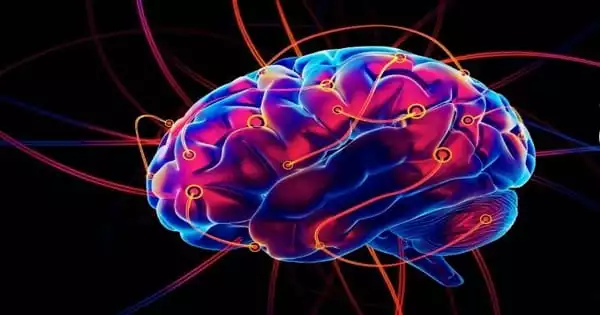The ability to detect and respond to the smell of a potential threat is essential for our survival and that of other mammals. Researchers were able to study what happens in the brain when the central nervous system judges a smell to be dangerous using a novel technique. According to the findings, negative odors associated with unpleasantness or unease are processed faster than positive odors and elicit a physical avoidance response.
According to a new study, our sense of smell appears to be exceptionally good and quick at warning us of danger. According to the findings of two experiments conducted by researchers at the Karolinska Institute in Sweden, the scent-detecting nerves deep inside our nose begin processing negative odors as soon as they are detected, triggering our body into a more rapid response.
Researchers at Sweden’s Karolinska Institutet were able to study what happens in the brain when the central nervous system judges a smell to be dangerous. According to the findings, negative odors associated with unpleasantness or unease is processed faster than positive odors and elicit a physical avoidance response. The study’s findings have been published in the journal ‘Proceedings of the National Academy of Sciences.’ The ability to detect and respond to the smell of a potential threat is essential for our survival and that of other mammals.
The human avoidance response to unpleasant smells associated with danger has long been thought to be a conscious cognitive process, but our study shows for the first time that it’s unconscious and extremely rapid.
Behzad Iravani
Researchers at Karolinska Institutet in Sweden were able to study what happens in the brain when the central nervous system judges a smell to be dangerous using a novel technique. According to the study, which was published in PNAS, negative smells associated with unpleasantness or unease are processed faster than positive smells and cause a physical avoidance response.
“The human avoidance response to unpleasant smells associated with danger has long been thought to be a conscious cognitive process, but our study shows for the first time that it’s unconscious and extremely rapid,” says first author Behzad Iravani, a researcher at Karolinska Institutet’s Department of Clinical Neuroscience.
The olfactory organ occupies about 5% of the human brain and allows us to distinguish between millions of different smells. Many of these odors are associated with a threat to our health and survival, such as chemicals and rotten food. After being inhaled through the nose, odor signals reach the brain in 100 to 150 milliseconds.

All living organisms’ survival is dependent on their ability to avoid danger and seek rewards. The olfactory sense appears to be especially important in humans for detecting and reacting to potentially harmful stimuli.
It has long been unknown which neural mechanisms in humans are involved in the conversion of an unpleasant odor into avoidance behavior. One reason for this is a lack of non-invasive methods of measuring signals from the olfactory bulb, the first part of the rhinencephalon (literally “nose brain”) with direct (monosynaptic) connections to the important central nervous system parts that help us detect and remember potentially dangerous situations and substances.
Researchers at Karolinska Institutet have now developed a method for measuring signals from the human olfactory bulb, which processes smells and transmits signals to parts of the brain that control movement and avoidance behavior.
Their findings are based on three experiments in which participants were asked to rate their experiences with six different smells, some positive and some negative, while the electrophysiological activity of the olfactory bulb was measured when responding to each of the smells.
“It was clear that the bulb reacts specifically and rapidly to negative smells and sends a direct signal to the motor cortex within about 300 ms,” says Johan Lundström, associate professor at Karolinska Institutet’s Department of Clinical Neuroscience. “The signal causes the individual to lean back and away from the source of the odor.”
He continues:
“The findings suggest that our sense of smell is important to our ability to detect dangers in our immediate surroundings, and that much of this ability is more unconscious than our response to danger mediated by our senses of vision and hearing.”
The Knut and Alice Wallenberg Foundation, the National Institute on Deafness and Other Communication Disorders, and the Swedish Research Council all contributed to the study’s funding. There have been no reports of conflicts of interest.
The entire process from detection to movement as a touch faster has been measured in research on visual and auditory reaction time; roughly 150 milliseconds for a reaction to sound and under 200 milliseconds for sight. While it may take us a little longer to react to a bad smell, it could take much longer if our olfactory bulb wasn’t already separating the signal.
















